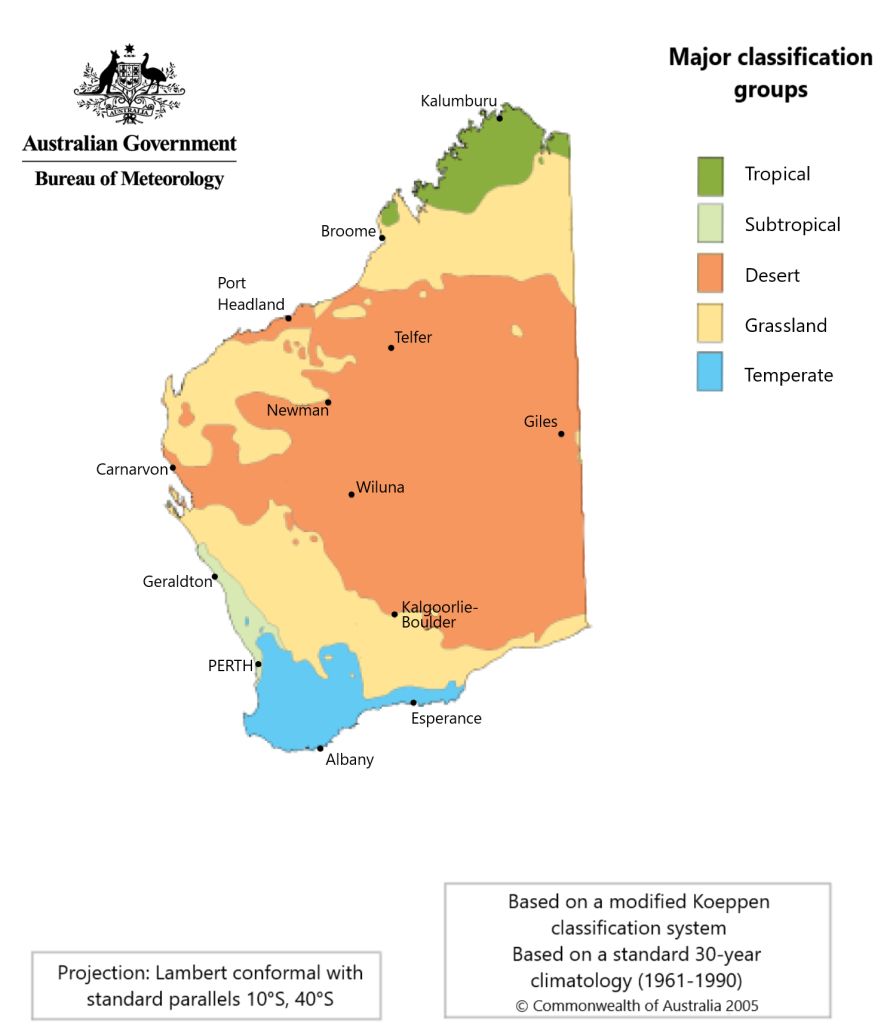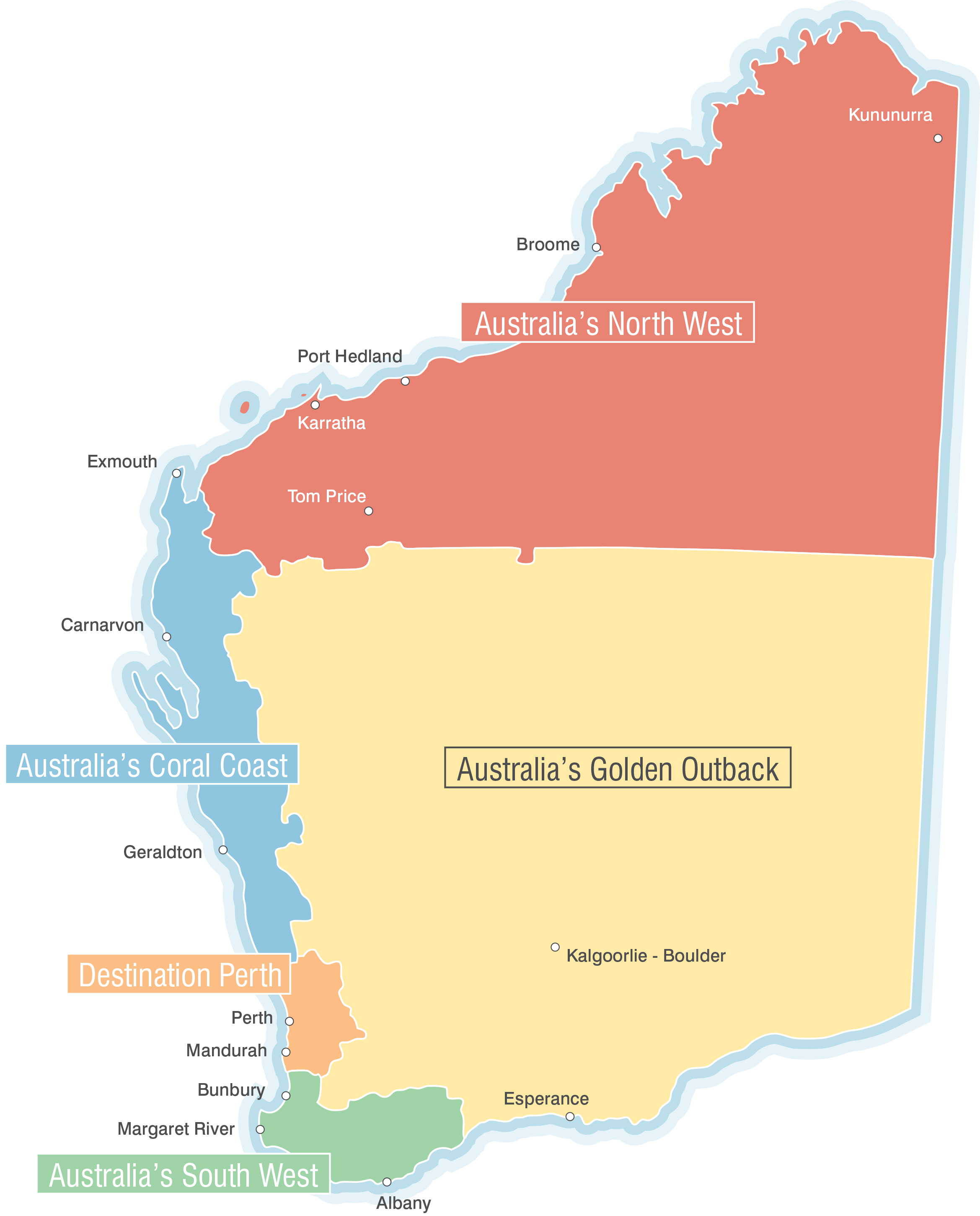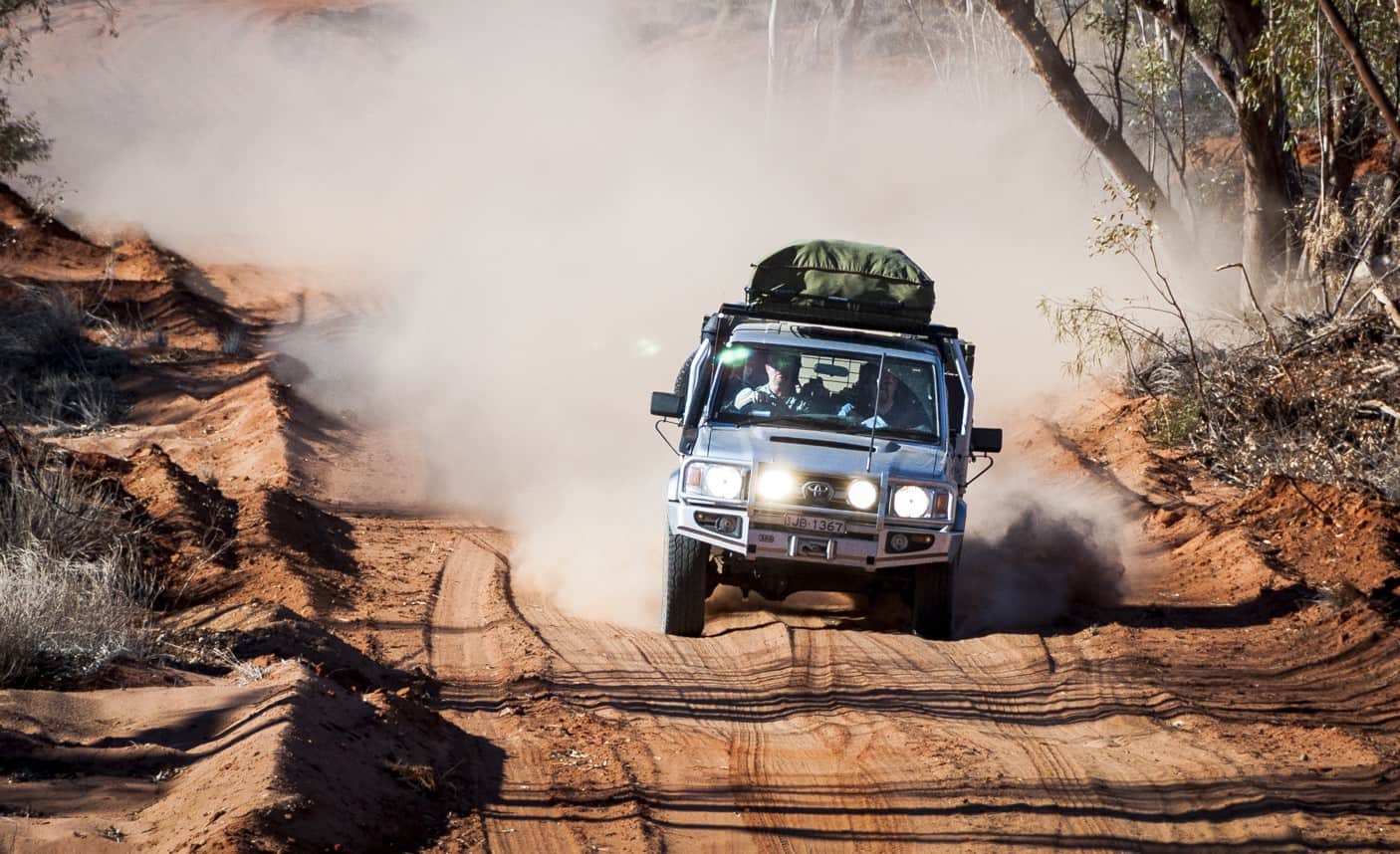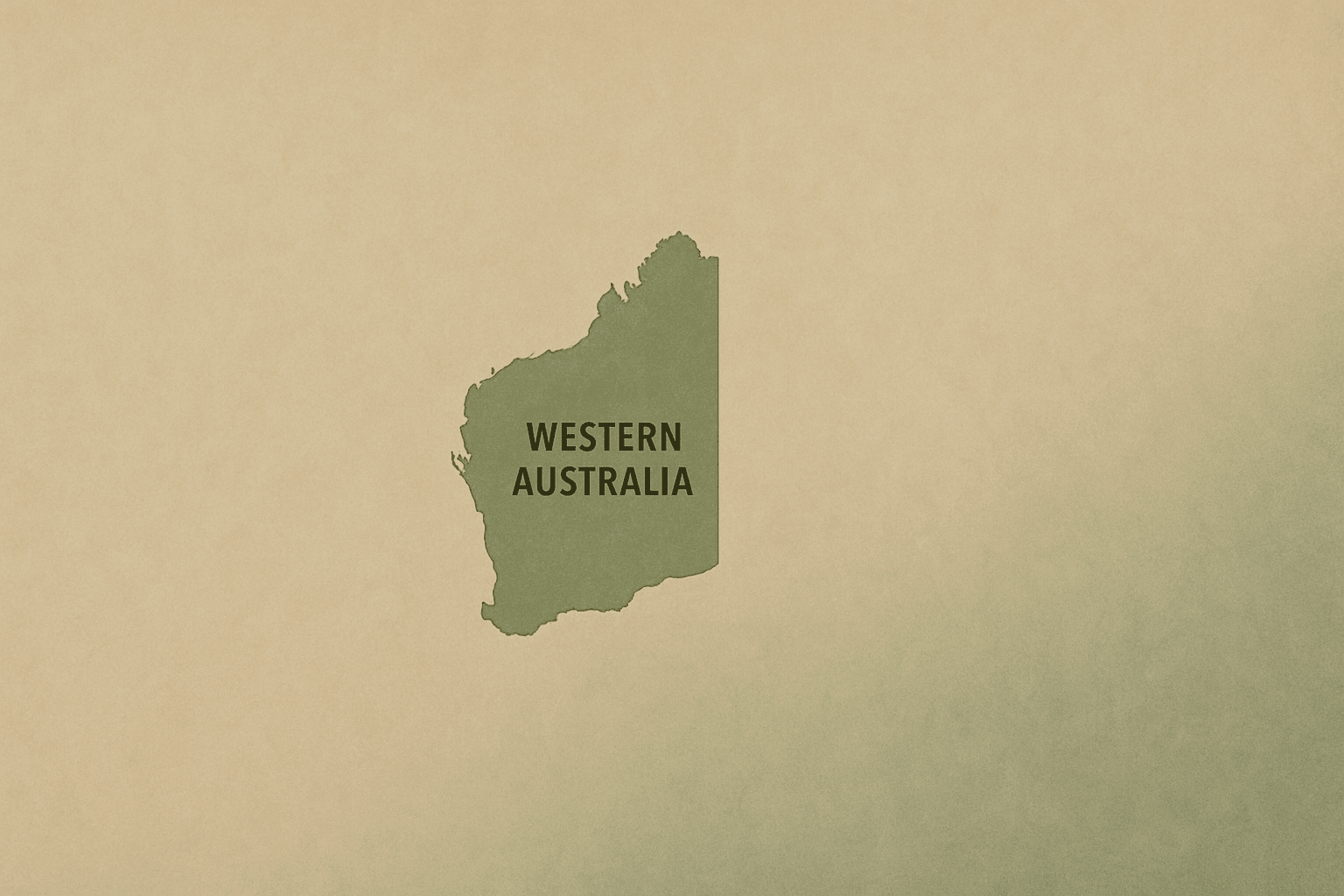Planning a road trip in Western Australia? Here’s what you need to know: WA’s diverse climate zones – tropical north, Mediterranean south, and arid deserts – can dramatically affect your journey. From impassable roads during the north’s wet season to scorching desert summers and coastal winter storms, understanding the weather is crucial for safety and comfort.
Key Takeaways:
- Northern WA (Kimberley, Pilbara): Best travelled during the dry season (May–October). Avoid wet season (November–April) due to heavy rains and floods.
- Southern WA (Margaret River, South West): Milder weather year-round, but watch for winter storms (June–August). Often windy and can get cold, even in spring and fall.
- Desert Regions: Extreme heat in summer, cold nights, and isolated routes require careful preparation, emergency or communication devices and mechanical knowledge.
Essentials for a Safe Trip:
- Pack region-specific gear (e.g., water supplies for the desert, wet-weather gear for the north).
- Choose the right vehicle – 4WDs and campervans equipped for WA’s conditions are ideal.
- Plan routes and check weather updates frequently.
WA’s vast landscapes offer incredible experiences, but smart planning ensures a safe, enjoyable adventure.
Crash Course on Australian Geography
WA’s Main Climate Zones
Western Australia’s varied climate zones create unique travel conditions across the state. Understanding these differences can help you plan your journey more effectively. Here’s a breakdown of the main zones and what to expect.

North: Wet and Dry Seasons
In the north, the climate is split into two main seasons. The dry season (May to October) is ideal for travel, with clear skies, moderate temperatures, and good road conditions.
Popular regions like the Kimberley are best explored during this time. On the other hand, the wet season (November to April) brings heavy rain, high humidity, and the risk of flash floods. Roads, including major highways, can become hazardous, so extra caution is needed.
South: Year-Round Weather
Southern WA experiences a Mediterranean climate with distinct seasonal patterns. Winters (June to August) are mild, while summers (December to February) are warm, with rain mostly falling in the cooler months.
Coastal routes like the South Western Highway are generally accessible, though winter storms can occasionally cause disruptions. Spring is a favourite time for visitors, offering perfect conditions for scenic drives and wildflower spotting.
When doing the Esperance Albany/Denmark loop, be prepared as it can get chilly at times, even during summer. It often gets windy and it is not rare to have rainy days, yes even in summer! The water is always fresh, some say even cold.
Desert Areas: Extreme Conditions and Isolation
Desert regions come with their own set of challenges, including extreme temperature swings and remote locations. Days can be scorching, while nights are often cold, and rainfall is rare.
Travelling here requires careful preparation. A well-equipped vehicle is a must – OffGrid Campers WA provides top-notch 4WD and campervan options for off-grid adventures but we place limitations as some areas are not covered by our insurers.
Not everyone is a capable 4WD driver and mechanic, as these are mandatory skills for anyone doing “hardcore” wheeling!
Key preparation tips for desert travel:
- Check weather forecasts daily.
- Carry plenty of emergency water.
- Plan fuel stops carefully, as service stations are widely spaced.
- Ensure you have reliable communication equipment.
Being aware of these climate zones and their seasonal patterns will help you navigate Western Australia’s vast landscapes safely and enjoyably.
When to Travel in WA
Best Travel Times by Region
Timing your WA road trip with the seasons can make all the difference for comfort and safety.

In northern WA, including the Kimberley and Pilbara, the dry season is ideal for travel. Meanwhile, the South West and Great Southern regions are most enjoyable in spring or autumn (even summer but it can get quite busy), thanks to mild and steady weather. While you can visit year-round, summer can be uncomfortably hot (most locals flee to the southern coast), and winter often brings stormy conditions.
Next, let’s look at how weather impacts driving on major routes.
Weather Considerations for Major Routes
The Coral Coast Highway is best tackled during cooler, stable weather. During hotter months, extreme heat and the risk of cyclones can disrupt travel plans. Always check forecasts and plan for potential delays.
The South West Circuit is accessible throughout the year. However, winter can bring challenging coastal conditions, so extra caution is advised.
Understanding these risks is crucial for safe travel.
Weather Risks and Travel Safety
Here are some key weather risks to keep in mind:
- Northern WA: During the wet season, keep an eye on local forecasts. Avoid flooded roads, and ensure you have emergency water and communication tools. A reliable, well-equipped vehicle – like those from OffGrid Campers WA – is essential for remote areas.
- Southern WA: In summer, be vigilant about bushfire warnings. In winter, wet roads require cautious driving.
- Desert regions: Start your drives early to avoid peak heat. Carry extra fuel and water, and always check road conditions before setting off.
sbb-itb-3fe747d
What to Pack for WA Weather
Packing for Western Australia’s (WA) shifting weather can be tricky, but having the right gear for each climate zone makes all the difference.
North WA Packing List
Northern WA experiences distinct wet and dry seasons. From November to April, expect wet conditions and pack accordingly.
Wet Weather Essentials
- Waterproof jacket and pants
- Lightweight, quick-dry clothing
- Waterproof hiking shoes
- Dry bags for electronics and important documents
Insect Protection
- DEET-based insect repellent
- Long-sleeve shirts and pants
- Mosquito head nets
- First-aid kit with antihistamines
South and Desert Packing List
Southern WA and desert regions bring a mix of cool mornings, hot days, and chilly evenings. Be ready for these temperature swings.
Desert Safety Basics
- At least 10 litres of water per person
- High-SPF sunscreen and zinc cream
- Wide-brimmed hat and sunglasses
- Emergency satellite phone or personal locator beacon (PLB)
- Basic vehicle repair kit
Packing these items will help you stay comfortable and prepared, no matter the conditions.
Make sure you always pack a fly net as those damn flies can get insanely annoying at times!
Vehicle Setup Requirements
Your vehicle also needs to be ready for WA’s diverse climates. OffGrid Campers WA vehicles come equipped with features to handle the challenges.
Power and Energy
- Solar power systems
- Advanced battery setups
- Reliable fridges for food storage
Water and Comfort
- Ample water storage
- Climate-controlled sleeping areas
- Starlink internet for up-to-date weather information
With the right gear and vehicle setup, you’ll be well-prepared to explore WA’s ever-changing landscapes.
Weather-Safe Driving Tips
Driving across WA’s varied climates means adjusting your approach to stay safe and prepared.
Wet Season Driving
Northern WA’s wet season (October–April) can bring challenging road conditions. Here’s how to prepare:
- Check the Bureau of Meteorology (BOM) for any weather warnings.
- Inspect all lights and hazard signals.
- Ensure tyres have proper tread depth.
- Confirm windscreen wipers are in good working order.
When driving in wet weather:
- Slow down – drive below the speed limit.
- Leave extra space between you and the car ahead.
- Use your headlights, even during the day.
- Avoid driving through flooded areas.

Desert Driving Tips
When transitioning to WA’s dry, arid landscapes, your driving needs to adjust accordingly.
Key safety measures:
- Regularly check tyre pressure, especially in high heat.
- Carry enough fuel for long, remote stretches.
- Take frequent breaks to prevent fatigue.
Emergency preparation:
- Bring at least 10 litres of water per person.
- Pack basic tools for vehicle repairs.
- Use Starlink for up-to-date weather information.
- Share your travel plans with someone reliable.
These precautions ensure you’re ready for the unique challenges of desert travel.
Coastal Road Safety
Coastal routes bring their own risks, like strong winds and salt exposure.
Dealing with wind:
- Keep a firm grip on the steering wheel.
- Be prepared for gusts when overtaking or passing vehicles.
- Reduce speed in crosswinds.
- Allow more space when overtaking.
Protecting your vehicle:
- Wash the undercarriage and exterior regularly to minimise salt damage.
- Check local weather forecasts for coastal warnings.
By combining these steps with earlier preparation tips, you’ll stay safe and keep your vehicle in good shape.
OffGrid Campers WA vehicles are equipped with high-clearance suspension, reliable navigation systems, and Starlink connectivity to provide real-time updates on weather and road conditions.
Note: Beach driving is allowed only in specific areas like Lucky Bay and Wharton Beach. Always check local rules and tide times before heading out.
Weather-Smart Camping
Campsite Selection by Season
In northern WA’s wet season (October to April), pick elevated sites with good drainage to avoid water pooling. Look for spots that naturally shield against strong winds and have stable ground.
 Source: National Geographic
Source: National Geographic
For summer camping in the south (December to February), prioritise areas with natural tree shade and position your campsite to catch coastal breezes. In desert regions, seek out sites offering morning shade and firm, flat ground, steering clear of creek beds that could flood suddenly.
Once you’ve chosen your site, focus on strategies to manage temperatures and stay comfortable.
Temperature Management
Keep temperatures under control with location-specific tactics. Just like prepping your vehicle for extreme weather, your campsite setup should be planned with care. Position your setup to maximise airflow – rooftop tents can be great for cross-ventilation in hot weather. Shelter your camp kitchen and use your vehicle to block the harsh afternoon sun.
For chilly southern nights, especially from June to August when temperatures can dip to around 5°C, thermal blankets are a must. Limit tent ventilation to retain warmth and keep vehicle doors shut to improve insulation.
Pest Control While Camping
After setting up your campsite and managing temperatures, tackle pest concerns. In tropical areas, mosquitoes and sandflies are most active at dawn and dusk. Use vehicle mesh screens to block pests while maintaining airflow.
Store food in sealed containers and use your vehicle’s compartments to minimise pest attraction. Clean up food scraps promptly. If camping along the coast, protect your gear from moisture and salt spray with waterproof storage. A rooftop tent’s sturdy canvas also offers added protection from the elements.
Conclusion
Travelling across WA’s diverse climate zones requires careful planning and a dependable vehicle. Weather conditions influence everything – where you camp, how you handle temperatures, and how you shield yourself from the elements.
Whether you’re venturing into the tropical north during the dry season or navigating the southern coastline in winter, having the right gear is crucial. As OffGrid Campers WA puts it:
"At OffGrid Campers WA, we blend our love for travel with local expertise." – OffGrid Campers WA
Being aware of WA’s weather patterns – from the wet seasons up north to the Mediterranean climate in the south – can make your road trips safer and more enjoyable. Travel wisely, camp responsibly, and immerse yourself in WA’s stunning landscapes.


